Americans love trucks, but the Toyota Tundra hasn’t been a roaring success as the company only sells around 115,000 units annually in the United States.
That’s far less than most competitors and it’s a tad peculiar as the mid-size Tacoma is one of the most popular trucks in its segment.
While there’s no easy explanation for this, the Tundra’s age certainly hasn’t helped. The second-generation truck was introduced at the 2006 Chicago Auto Show and a series of updates have helped to hide its age. However, 15 years is an eternity in the automotive world and the Tundra has been surpassed by more modern rivals.
Toyota is now fighting back with an all-new Tundra, which is significantly more comfortable, capable and high-tech. It might not strike fear into the hearts of Detroit automakers, but the company has upped their game and created a compelling pickup that is far more appealing than its predecessor.
No Longer A Wallflower
There’s no getting around it: the 2022 Toyota Tundra stands out. This was a purposeful decision as the company adopted a “technical muscle” design that commands attention thanks to its imposing grille, which is flanked by standard LED headlights. Moving further back, designers gave the truck chiseled bodywork, blacked out A-pillars, and three-dimensional LED taillights with sequential turn signals on higher-end variants.
The model also sports an all-new tailgate, which is 20% lighter and features debossed badging. While a tailgate release comes standard on the key fob, Limited and above trims add a bump switch on the driver’s side taillight that enables owners to lower the tailgate even if their hands are full.
Elsewhere, the truck has an aluminum hood and a cab-mounted LED bed light. Buyers will also find 18- or 20-inch wheels as well as options such as a panoramic glass moonroof and power running boards with a new bedstep. The Tundra’s vertical rear window returns and can be paired with the panoramic moonroof to create a convertible-like experience.
It’s Bed Time
Truck beds have it rough as they’re exposed to the elements and take a relentless beating from cargo. This can pose a challenge to even the heartiest ones, so Toyota decided to give the new Tundra an aluminum-reinforced composite bed. This not only saves weight, but also enables the bed to resist dents and scratches as well as rust and corrosion.
It’s available in a number of different sizes as Double Cab variants offer 6.5- and 8.1 foot beds. CrewMax models continue to offer their familiar 5.5 foot bed, but they’re being joined by an all-new 6.5 foot bed due to customer demand.
The latter is a boon for people who routinely haul long items and the beds offer payload capacities of between 1,575-1,940 lbs (714-880 kg). The latter is an increase of more than 11 percent and the bed can hold a little less than 68.5 cubic feet (1,940 liters) of cargo in its most spacious setup.
The bed isn’t terribly interesting and you have to move up to the SR5 variant to get side rails with adjustable tie-downs. Platinum and above trims come with LED lights and a 120V/400W outlet in the bed, but they’re also available on the SR5 and Limited as an option.
However, Toyota doesn’t have any party tricks like the competition. As a result, there’s nothing like Chevy’s Multi-Flex tailgate or Ford’s onboard generator. That being said, Toyota teased plans for a total of 115 accessories including 51 new ones. While a dealer-installed 3 inch (76 mm) lift kit got the most attention, the company also teased a bed mat and swing-out storage compartments for the bed.
A Modern And High-Tech Interior
Complimenting the rugged and aggressive exterior is an all-new cabin, which is modern and high-tech.
Drivers sit behind a chunky steering wheel and find themselves looking at a 4.2-inch multi-information display that is flanked by analog gauges. While it’s on the small side, the display is useful as it can function as a digital speedometer, show pitch and roll, and display trailer brake information.
More notably, higher-end variants come with a 12.3-inch digital instrument cluster. It features a clean and crisp display, and makes the Tundra one of the few Toyotas to offer digital instrumentation.
The rest of the interior isn’t flashy, but the controls are nicely laid out and within relatively easy reach. Highlights include meaty toggle switches, a minimalist four-wheel drive selector, and a rubberized rotary drive mode selector.
Speaking of the latter, all but the base model have Eco, Normal and Sport modes while the Platinum and 1794 can be equipped with a system that offers Eco, Comfort, Normal, Sport S, Sport S+ and Custom modes. Custom is the most notable mode as it enables owners to individually adjust the settings for the powertrain (Eco, Normal or Power), suspension (Normal or Sport) and steering (Normal or Sport).
A Voice-Focused Infotainment System With Cloud Connectivity
Aside from exterior styling, one of the biggest things that dated the outgoing Tundra was its old-school 7- and 8-inch infotainment systems. While they offered Amazon Alexa, Android Auto and Apple CarPlay compatibility, they were clearly behind the times.
That’s no longer the case as the 2022 Tundra has an all-new Audio Multimedia system with 8- or 14-inch displays. The latter is massive and is larger than anything you’ll find in the Chevrolet Silverado or Ford F-150.
We’ve already taken a deep dive into the infotainment system, but we’ll do a brief recap here. It has five times the processing power as the previous infotainment system as well as support for wireless Android Auto and Apple CarPlay. The system also features cloud-based navigation, Google point of interest data, and improved touch functionality including a smartphone-like pinch-to-zoom function. Other highlights include over-the-air updates, built-in support for Apple Music and Amazon Music streaming, and user profiles which can save your preferred audio, climate and vehicle settings.
However, the big news is the Intelligent Assistant which responds to the “Hey/Hi/Hello/OK Toyota” wake words. It answers natural language requests such as finding nearby restaurants or gas stations. Users can also have it adjust vehicle settings such as the climate control system.
The system is easy to use and the experience is similar to talking to an Amazon Echo device. However, there are downsides as many features require a monthly subscription after an initial trial period. Safety Connect comes with a one year trial and costs $8 per month afterwards for automatic collision notification, stolen vehicle location services and enhanced roadside assistance.
Remote Connect also costs $8 per month after an initial one year trial period and it allows you to lock / unlock the doors, start the engine and honk the horn from your smartphone. However, the main feature is Drive Connect which comes with a one year trial on models equipped with the 14-inch infotainment system and costs $16 per month afterwards. It allows access to the aforementioned cloud-based navigation and Intelligent Assistant as well as 24-hour access to a live agent who can assist you.
If that wasn’t enough subscriptions, there’s Wi-Fi Connect which allows for Apple Music and Amazon Music streaming and also functions as a hotspot for up to 10 devices. It comes with a stingy 30 day / 3GB trial and afterwards you’ll have to sign up for an AT&T data plan, which currently costs $20 or $25 per month or $200 annually.
Finally, there’s Service Connect which provides personalized maintenance updates and vehicle health reports. It comes with a more generous three year trial, but isn’t available as a standalone option so you’ll need to sign up for either the Safety or Remote Connect service to continue using it.
Putting aside the dizzying array of subscriptions, the infotainment system works well and the Intelligent Assistant’s voice recognition technology is spot on. That being said, the cloud-based navigation system could use some more refinement as it’s seriously lacking in details when compared to Google.
On the drive back to San Antonio, the infotainment system would simply say “left” when competitors would say something along the lines of ‘stay in the left three lanes to continue on your route.’ That’s a subtle but important difference, especially in rush hour traffic, as Toyota’s cloud-based navigation had me fighting to get in the left lane when I would have been fine staying where I was.
On the bright side, the Tundra offers an assortment of camera views which help when off-roading, connecting a trailer or simply just parking. A backup camera with guidelines comes standard, but a Panoramic View Monitor and Multi-Terrain Monitor are also available. The latter acts as a virtual spotter and allows drivers to check out their immediate surroundings with front, rear and side camera views. Likewise, the Panoramic View Monitor has displays showing the bed, hitch and rear sides.
Trims Range From Relatively Basic To Downright Luxurious
While Toyota is keeping pricing under wraps, the entry-level Tundra SR comes equipped with a 4.2-inch multi-information display, an 8-inch infotainment system, and a six- or nine-speaker audio system depending on cab configuration. Buyers will also find an acoustic laminated windshield, an automatic climate control system, a passive entry system, and an auto-dimming rearview mirror. The model also boasts a rearview camera, three USB ports, and a split folding rear seat with storage compartments underneath. Given it’s positioning, it also comes equipped with manual fabric front seats and a polyurethane multi-function steering wheel.
Upgrading to the SR5 adds a drive mode selector, a tow / haul mode, and a trailer brake control system. Buyers will also find a towing hitch receiver and 18-inch alloy wheels as the base model comes with steelies.
That doesn’t sound like much of an upgrade, but the SR5 can be equipped with a handful of notable options including a TRD Sport package that adds a lowered sport suspension, a TRD-branded grille and 20-inch wheels. Customers can also opt for a TRD Off-Road package, which features the aforementioned grille as well as skid plates, mud guards, an off-road focused suspension and 18-inch TRD wheels. When the package is ordered in combination with four-wheel drive, it also includes an electronic locking rear differential and a Multi-Terrain Select system with Crawl Control and Downhill Assist.
Continuing up the trim ladder is the Tundra Limited, which comes standard with a 14-inch infotainment system, a dual-zone automatic climate control system, and eight-way power front seats with heating and ventilation as well as SofTex upholstery. Buyers will also find a leather-wrapped steering wheel and shifter, an auto-dimming rearview mirror with HomeLink, and soft-touch accents on the instrument panel, doors and center console. Rounding out the highlights are 20-inch wheels and a power rear window on CrewMax variants.
The Platinum is more luxurious as it features leather seats with heating and ventilation front and rear. It also has a driver’s seat memory system, a power tilt / telescopic steering wheel, a digital rearview mirror and rear sunshades, as well as a 12.3-inch digital instrument cluster, a wireless smartphone charger, a Panoramic View Monitor, and a rear 120V/400W AC outlet. Rounding out the highlights are an ambient lighting system, a panoramic moonroof, and a 12-speaker JBL premium audio system. The model also has Platinum badging on the floor mats as well as the passenger side dashboard.
The Tundra 1794 is similar to the Platinum, but it’s flashier thanks to stylish leather seats and oodles of exterior chrome. They’re joined by special floor mats and genuine American walnut wood trim that features a laser-etched “1794 Edition” badge on the passenger side.
Lastly, there’s the Tundra TRD Pro which is based on the Limited trim. We’ll talk more about its off-road features a little later, but it has all of the usual Limited equipment as well as a 12.3-inch digital instrument cluster and a 14-inch infotainment system with the aforementioned JBL premium audio system. Other highlights include a red push-button ignition, a TRD shifter and steering wheel, and aluminum pedals. Drivers will also find special floor mats as well as heated / ventilated SofTex front seats with technical camo inserts. Other niceties include a wireless smartphone charger, Multi-Terrain and Panoramic View Monitors, Multi-Terrain Select and “Toyota” lettering on the passenger side dashboard.
Regardless of which trim is selected, all Tundras come equipped with the Toyota Safety Sense 2.5 suite of driver assistance systems. It includes Full-Speed Range Dynamic Radar Cruise Control, Lane Tracing Assist (lane centering) and a Pre-Collision System with Pedestrian Detection. They’re joined by Automatic High Beam Headlights, Road Sign Assist and Lane Departure Alert with Steering Assist. Customers can build on that extensive suite by adding a Blind Spot Monitor with Rear Cross-Traffic Alert.
Putting the equipment aside, higher-end versions of the Tundra are downright luxurious and that’s especially true in the stylish 1794. We dug the comfortable two-tone leather front seats, which offer plenty of adjustment as well as ventilation that kept us cool on a hot afternoon. While I think the Ram 1500 Limited Longhorn looks more impressive, the Tundra isn’t a bad place to spend some time as the cabin is quiet and most touchpoints are nicely padded.
The front seats are also spacious, while the rear seats are almost limo-like in CrewMax variants. They feature a whopping 41.6 inches (1,057 mm) of legroom, which is more than the 41.2 inches (1,046 mm) relegated to the driver and front passenger.
That being said, I wouldn’t want to spend much time in the back of Double Cab variants as they offer a mere 33.3 inches (846 mm) of rear legroom. That’s only 3.4 inches (86 mm) more than the 2022 GR 86 and it’s less legroom than you’ll find in either the Corolla or Prius. So unless you want a mutiny on your next road trip, stick with the CrewMax variant if you routinely haul adults.
A New Twin-Turbo V6 And A Hybrid For Hooligans
Under the hood, the 5.7-liter V8 has been replaced by a new twin-turbo 3.5-liter V6. While that sounds like a downgrade, it isn’t as the engine produces up to 389 hp (290 kW / 394 PS) and 479 lb-ft (649 Nm) of torque.
That’s an increase of 8 hp (6 kW / 8 PS) and 78 lb-ft (106 Nm) of torque, and the output easily beats the Silverado’s turbocharged 2.7-liter four-cylinder as well as the Ram 1500’s 3.6-liter V6. It also outshines the F-150’s 2.7-liter EcoBoost V6, while falling just short of the 3.5-liter EcoBoost V6.
If that wasn’t impressive enough, the twin-turbo engine also eclipses the 5.3-liter V8 found in the Silverado. While it does have 11 hp (8 kW / 11 PS) less than Ford’s optional 5.0-liter V8, that’s more than offset by the extra 69 lb-ft (94 Nm) of torque. It’s a similar story when compared with Ram’s 5.7-liter Hemi V8 as the twin-turbo V6 has 6 hp (4 kW / 6 PS) less but an extra 69 lb-ft (94 Nm) of torque.
That being said, the entry-level Tundra SR will have a reduced output of 348 hp (256 kW / 353 PS) and 405 lb-ft (549 Nm) of torque. Toyota barely mentioned this, but it’s important to note even though the SR is expected to sell in relatively small numbers.
In top guise, the twin-turbo packs plenty of power and has minimal turbo lag. While there is some, once the turbos get spooled up, prepare for takeoff.
The engine is connected to an excellent 10-speed automatic transmission, which can be paired to an optional four-wheel drive system. Fuel economy ratings haven’t been finalized, but Toyota expects the rear-wheel drive variant will return 18 mpg city, 23 mpg highway and 20 mpg combined. With four-wheel drive, that should drop to 17 mpg city, 22 mpg highway and 19 mpg combined.
If Toyota is able to hit their projections, the 2022 Tundra will be significantly more fuel-efficient than its predecessor which carried an EPA rating of 13 mpg city, 17 mpg highway and 15 mpg combined with rear-wheel drive. In particular, the new model should get an extra 5 mpg city, 6 mpg highway and 5 mpg combined. Likewise, the four-wheel drive variant should return an additional 4 mpg city, 5 mpg highway and 5 mpg combined.
That brings us to the star of the show, which is the all-new i-Force Max powertrain. It consists of a twin-turbo 3.5-liter V6, a 1.87 kWh nickel-metal hydride battery pack, and an electric motor that develops 48 hp (36 kW / 49 PS) and 184 lb-ft (250 Nm) of torque. The electric motor is effectively sandwiched between the engine and the 10-speed automatic transmission, and this enables it to provide electric assist, energy regeneration and electric-only driving at low speeds.
While the latter is notable, the real benefit is when the engine and electric motor work together to produce their combined maximum output of 437 hp (326 kW / 443 PS) and 583 lb-ft (790 Nm) of torque. That bests everything in the Silverado’s engine bay and does the same against the Ram 1500, if you exclude the bonkers TRX. It also beats all of the mainstream engines in the F-150, while having 13 hp (10 kW / 13 PS) less and 73 lb-ft (99 Nm) more than the Raptor.
The engine is available exclusively in CrewMax versions of the pickup, but it’s the powertrain you want as it’s a hybrid for hooligans. That’s especially true in Sport and Sport+ modes as they utilize the electric motor to improve responsiveness and acceleration.
During our short time with a hybrid prototype, turbo lag was effectively eliminated and the response to accelerator inputs was near instantaneous. More importantly, the hybrid is a blast to drive as off-the-line acceleration improves significantly and you can chirp the tires without even trying. In traditional Toyota fashion, the hybrid system works seamlessly and there doesn’t appear to be any drawbacks other than the inevitable price increase that accompanies the powertrain.
While Toyota declined to provide fuel economy estimates for the hybrid pickup, we averaged 17.9 mpg in a short test. That compares to averages of 15.8 and 19.5 mpg in the regular model, but all three were driven on different courses so you probably shouldn’t read too much into those numbers. That being said, the hybrid is more about performance than fuel efficiency so we shouldn’t expect eye-popping numbers when official figures are released.
New Suspension And Platform Result In A More Comfortable Driving Experience
While the hybrid powertrain is a notable addition, it’s far from the most important change as the 2022 Tundra rides on an all-new platform that is shared with the redesigned Land Cruiser. The truck also boasts a new fully boxed high-strength steel frame, which significantly increases rigidity.
However, that’s just the tip of the iceberg as the truck has an all-new multi-link rear suspension, which ditches leaf springs in favor of coils. It’s joined by a new double wishbone front suspension, which, according to Toyota, “benefits from a kingpin offset angle reduction to enhance straight-line stability and high-speed driving” as well as an enlarged caster trail for added stability. The company also reduced roll steer by 25 percent to improve cornering and raised the roll height center to reduce body roll.
The upgrades don’t stop there as higher-end variants have hydraulic cab mounts and can be equipped with an all-new rear air suspension with automatic and manual adjustment. The latter features Low, Normal and High settings and can lower the rear end to help with loading or raise it to improve clearance when off-roading.
The Tundra can also be equipped with an adaptive variable suspension for the first time. It adjusts the damping based on road conditions and promises to improve handling, stability and comfort.
Given all of the changes, it comes as little surprise that the 2022 Tundra is remarkably comfortable. The ride quality is impressive for a full-size truck and is a significant improvement over its predecessor. While there were occasional bouts of jostling, these incidents were relatively few and far between. In fact, the Tundra was perfectly comfortable both on and off the highway.
The truck is also a decent handler as cornering was drama free and only produced minimal body roll. Of course, it shouldn’t surprise anyone that driving a 5,095-6,185 lbs (2,311-2,805 kg) pickup isn’t the most exciting experience. Part of that can be chalked up to the steering, which isn’t terribly remarkable in either Normal or Sport mode.
The Maximum Towing Capacity Climbs To 12,000 Pounds
Thanks to the all-new frame, the Tundra is tougher than ever as the maximum towing capacity increases 17.6 percent to 12,000 lbs (5,443 kg). That drops to 8,300 lbs (3,765 kg) on the low end and it’s worth noting the entry-level engine delivers the highest towing capacity.
Speaking of towing, the Tundra offers two different tow / haul modes. The first is designed for use with small to medium trailers and boats, while the other provides a more aggressive throttle response that is ideal for towing large boats, campers and box trailers.
Owners can create multiple trailer profiles and equip their truck with an integrated trailer brake controller as well as newly available power extending and folding tow mirrors. The latter provide an increased field of view and have integrated turn signals as well as LED trailering lights, which shine rearward to help you connect or back up a trailer at night.
On the topic of backing up a trailer, the Tundra offers a Straight Path Assist feature which can be easily accessed by pushing a button on the center console. When activated, the system will automatically steer the truck and trailer in a straight line. All you have to do is accelerate and brake, while keeping an eye on your surroundings. It’s remarkably easy and intuitive to use, and could make boat launch fails a thing of the past.
A Rugged Off-Roader
Off-road focused pickups are a hot commodity and Toyota is once again offering a Tundra TRD Pro. It comes exclusively with the hybrid powertrain and boasts a 1.1 inch (28 mm) front lift, a unique front stabilizer, 2.5-inch FOX internal bypass coilovers and remote-reservoir rear shocks.
Buyers will also find an aluminum front skid plate, red suspension components, and added protection for the engine, fuel tank and transfer case. Other highlights include an electronic locking rear differential, a Multi-Terrain Monitor and Multi-Terrain Select. They’re joined by an LED light bar, technical camo, and 18-inch forged aluminum wheels wrapped in 33-inch Falken Wildpeak tires.
While we didn’t drive the Tundra TRD Pro, we did test a couple of models outfitted with the TRD Off-Road package. It features a number of components that are shared with the TRD Pro including an electronic locking rear differential and a Multi-Terrain Select system.
The latter has a Crawl Control function that acts as a low-speed cruise control system for off-roading. Drivers can adjust the speed by turning the rotary drive mode selector and it enables them to focus on steering or watching for obstacles on the Multi-Terrain Monitor. While the system does take some of the fun out of off-roading, it allows for a smoother experience as trying to apply consistent pressure to the accelerator can be tricky when you’re bouncing around. The truck also has Downhill Assist Control, which limits how fast the vehicle descends a steep slope.
A Tougher, More Comfortable Tundra
As you can probably tell from the length of this review, engineers left no stone unturned in their effort to create a more comfortable and capable pickup.
Their hard work is clearly evident as the 2022 Tundra has a more powerful and efficient engine as well as an all-new hybrid powertrain. The latter delivers diesel-like levels of torque, but with the responsiveness that only an electric motor can provide.
On top of that, the truck has a fully boxed frame and an all-new suspension that delivers decent handling and a comfortable ride quality. Comfortable can also be used to describe the cabin as it can be equipped with wood trim, heated and ventilated seats and a heated leather steering wheel. And then there’s the all-new infotainment system which is voice-focused and available with a massive 14-inch display.
Toyota also improved the core capabilities of the truck as towing and payload capacities have increased, while the CrewMax variant can now be equipped with a longer 6.5 foot bed. Furthermore, new tech features should make towing less stressful.
The end result is one truly impressive pickup that is leaps and bounds ahead of its predecessor. While it might have an uphill battle against the juggernauts from Detroit, Toyota isn’t going down without a fight. We’ll see how that battle plays out when the Tundra goes on sale in December.
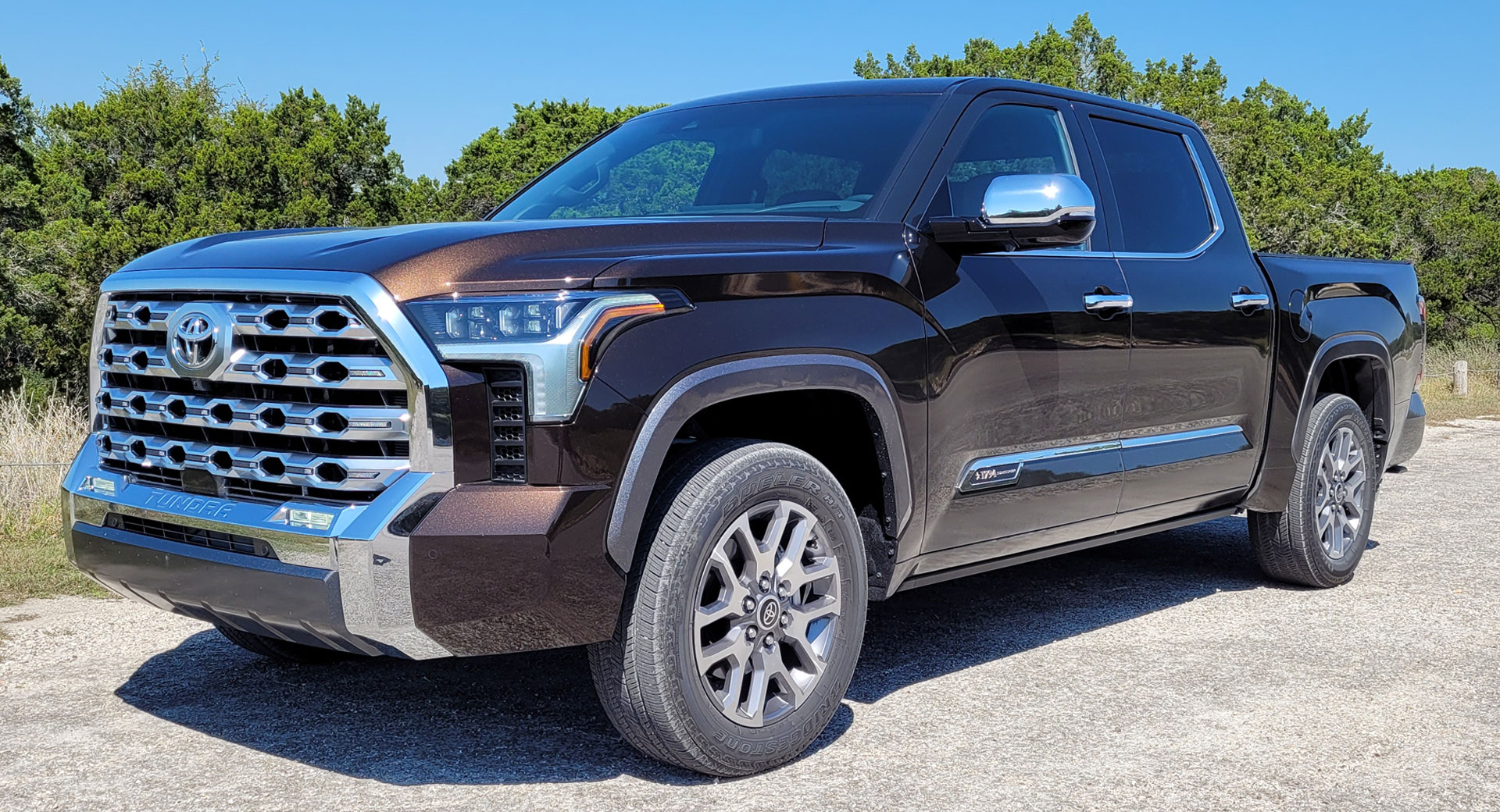
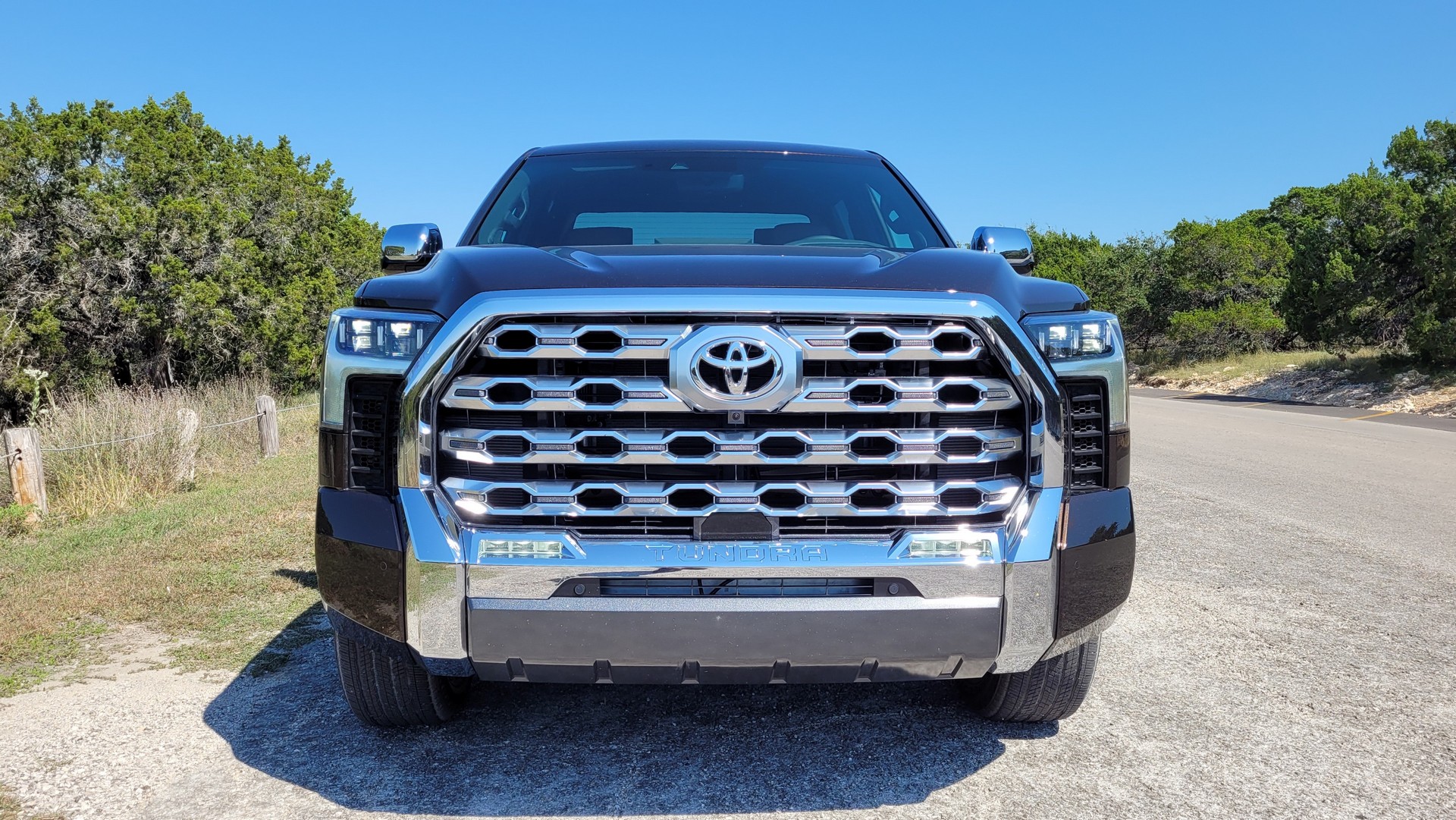
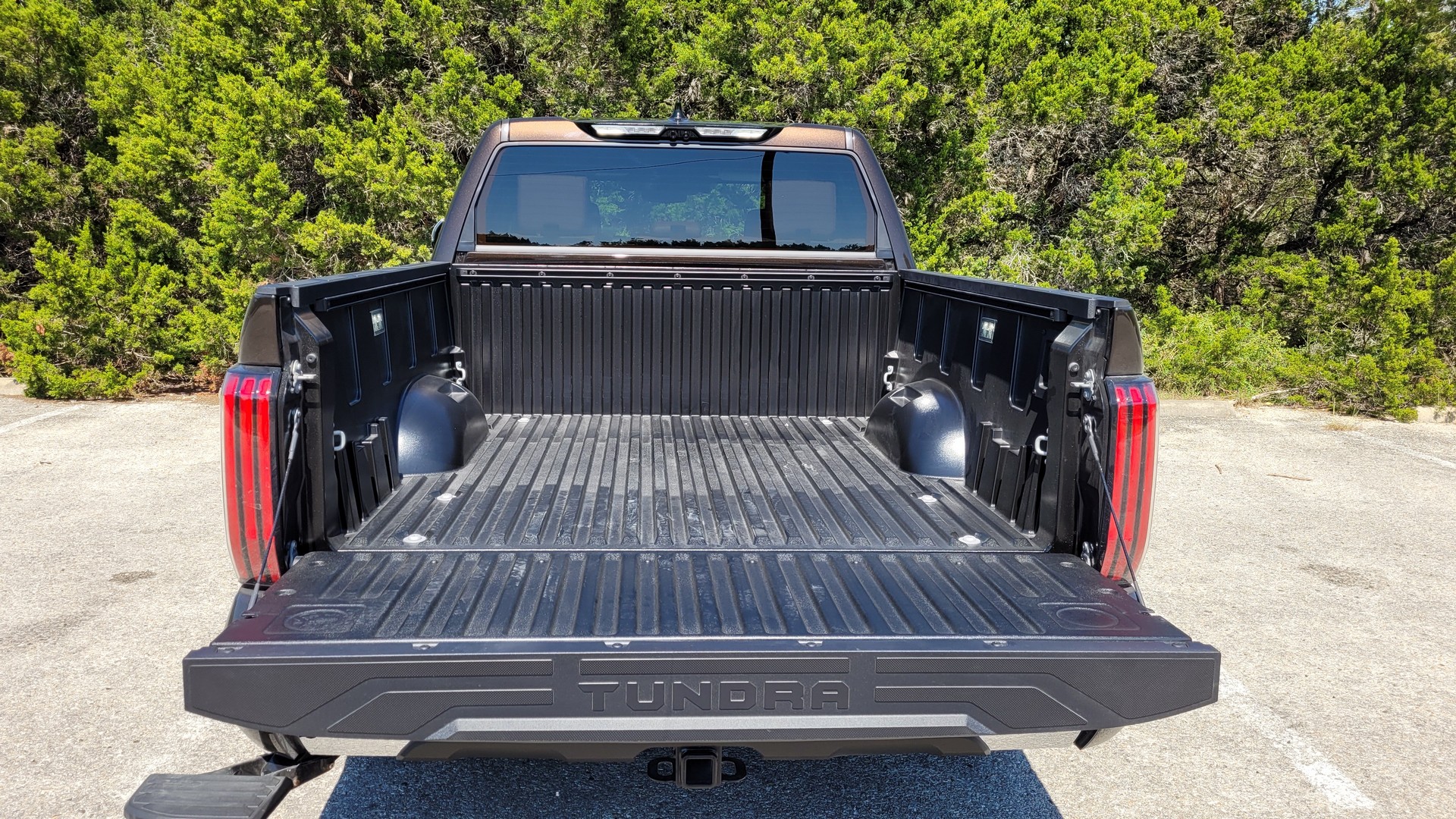

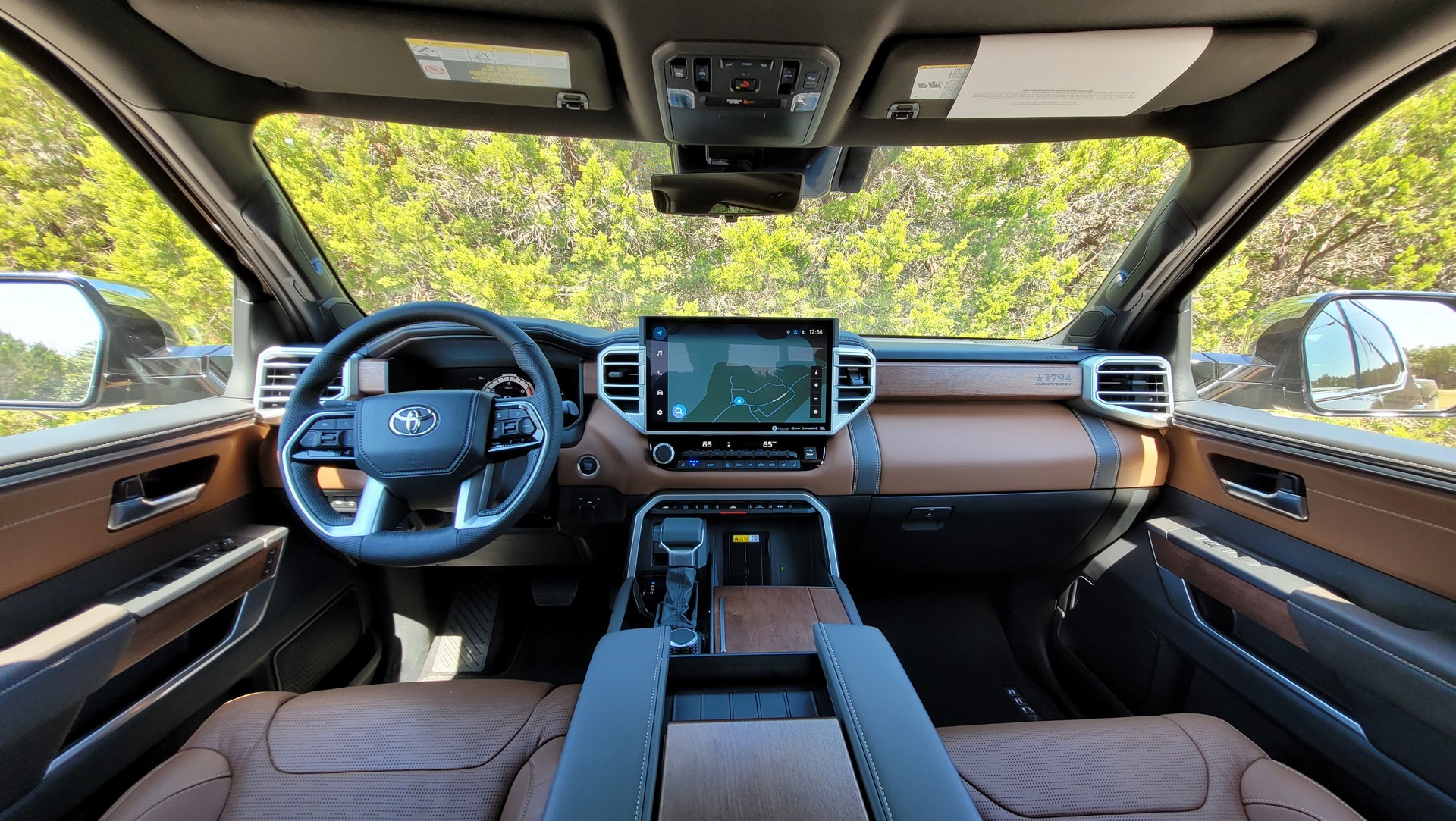
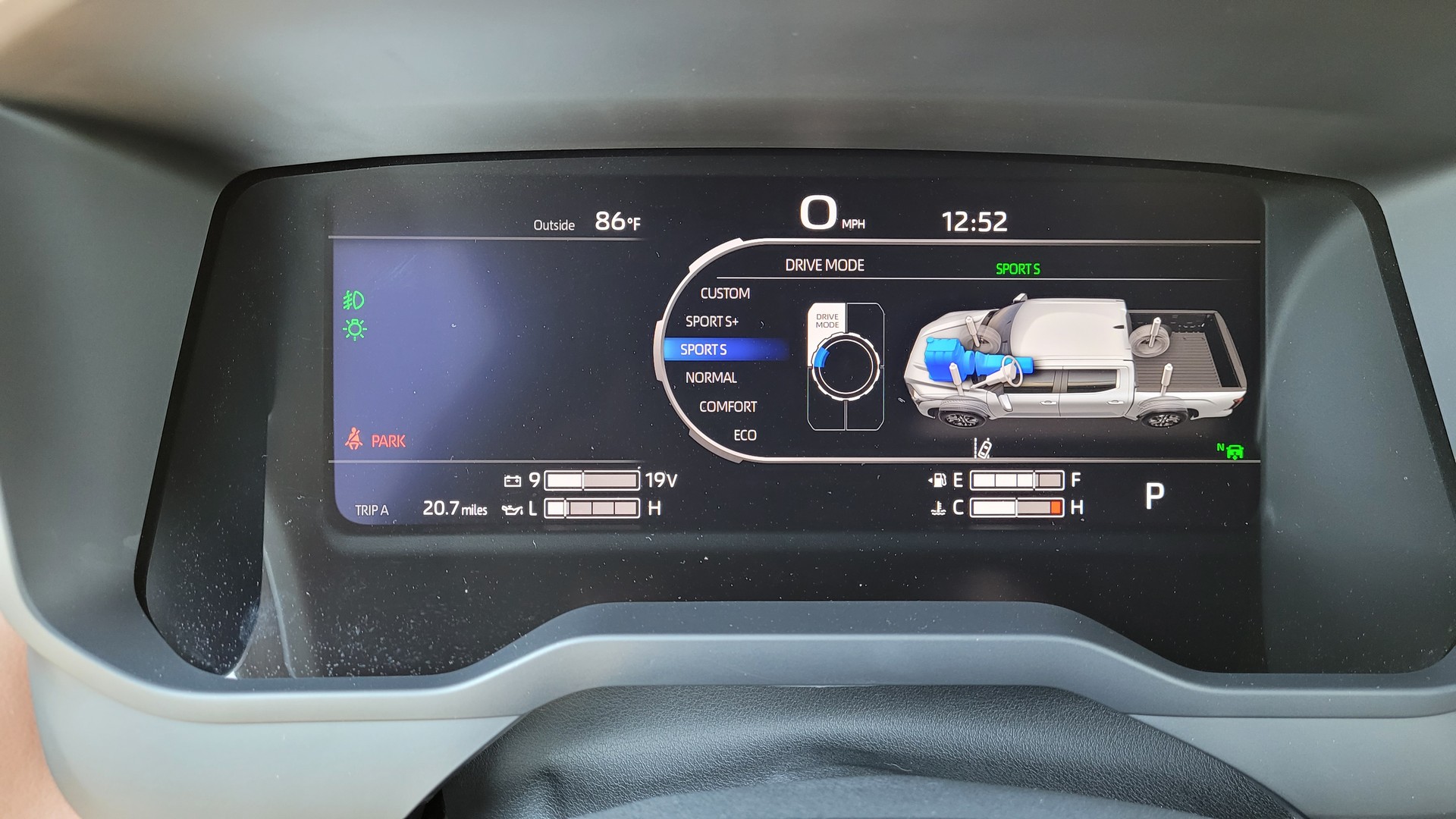
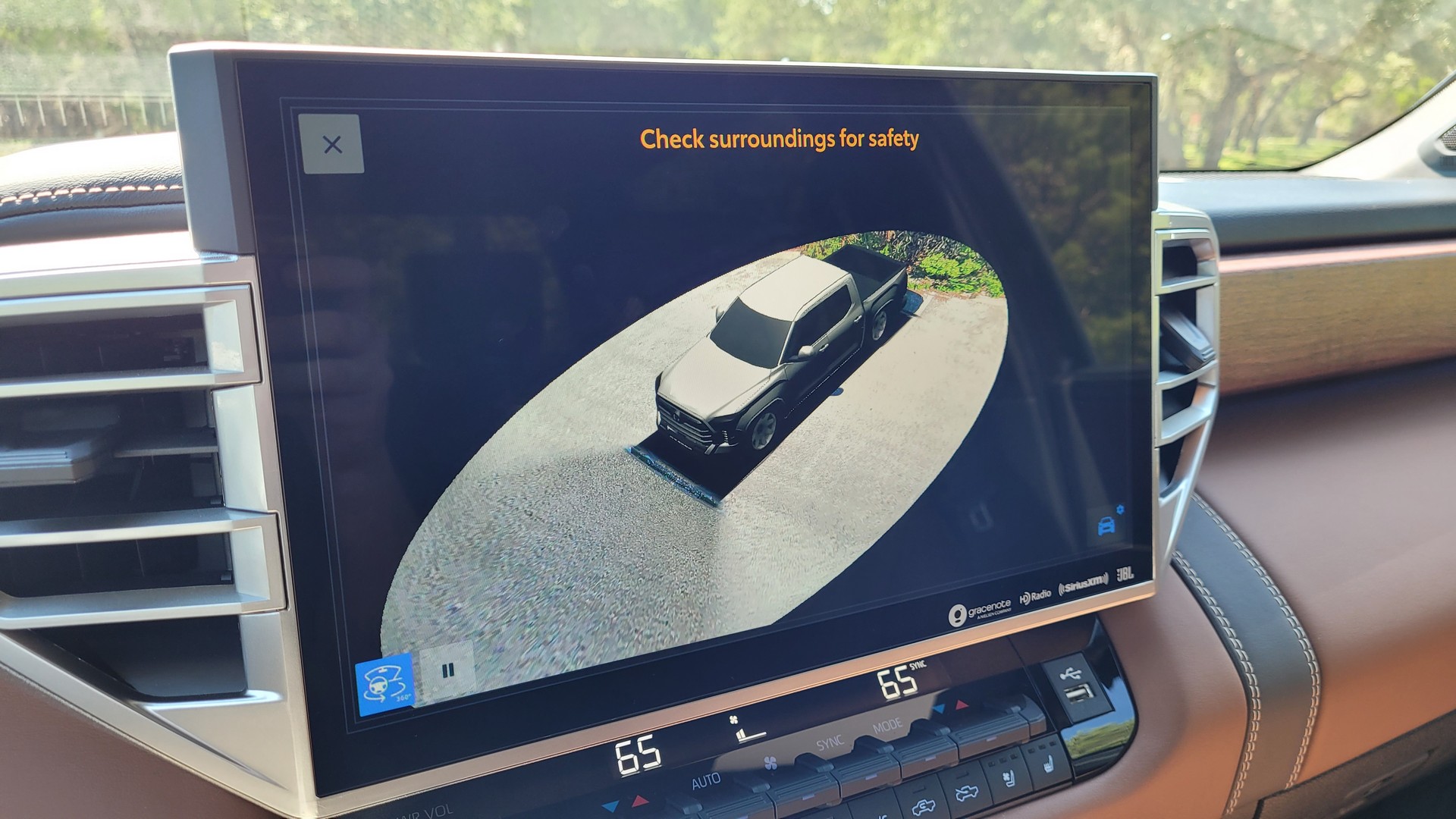
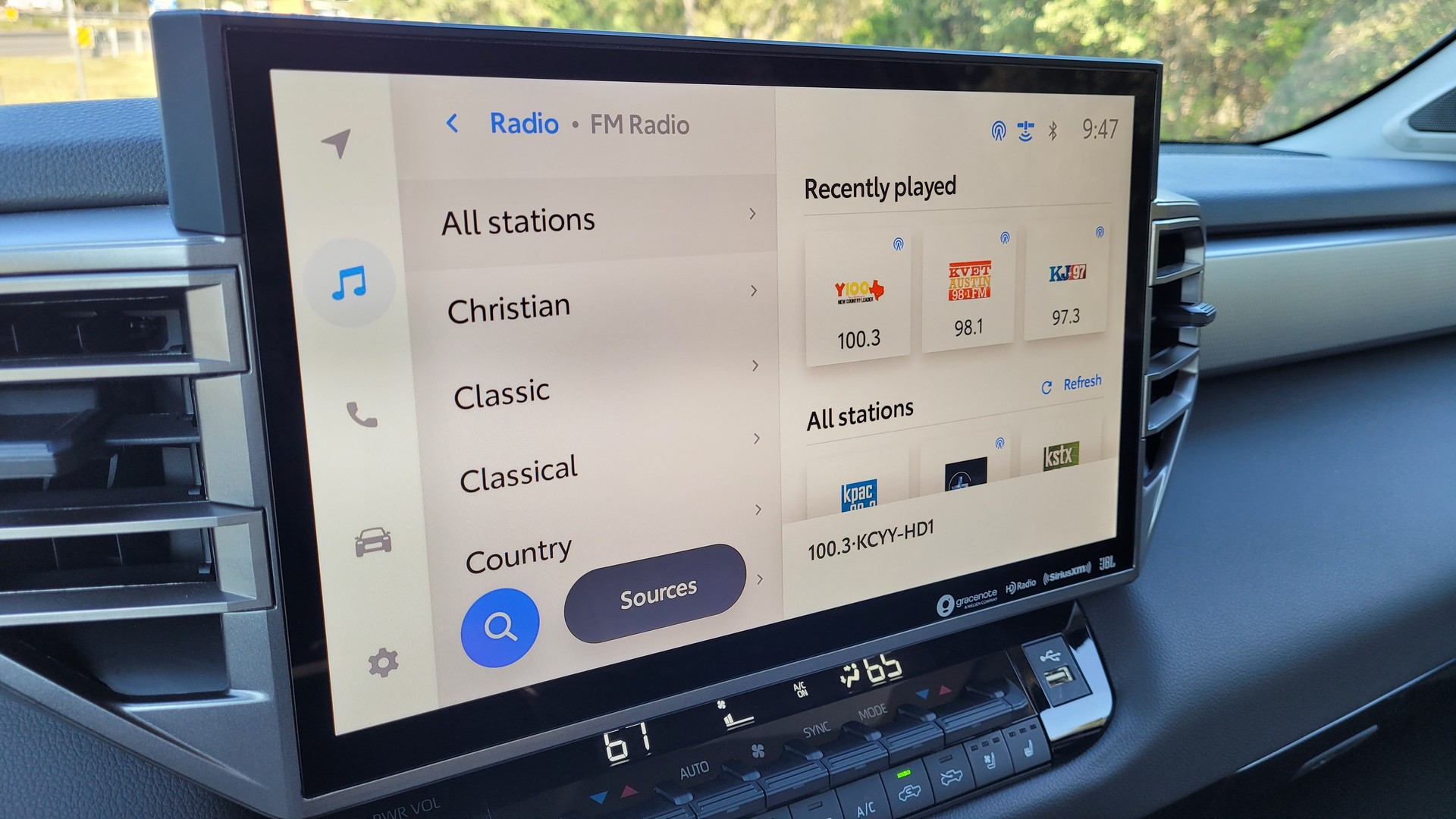
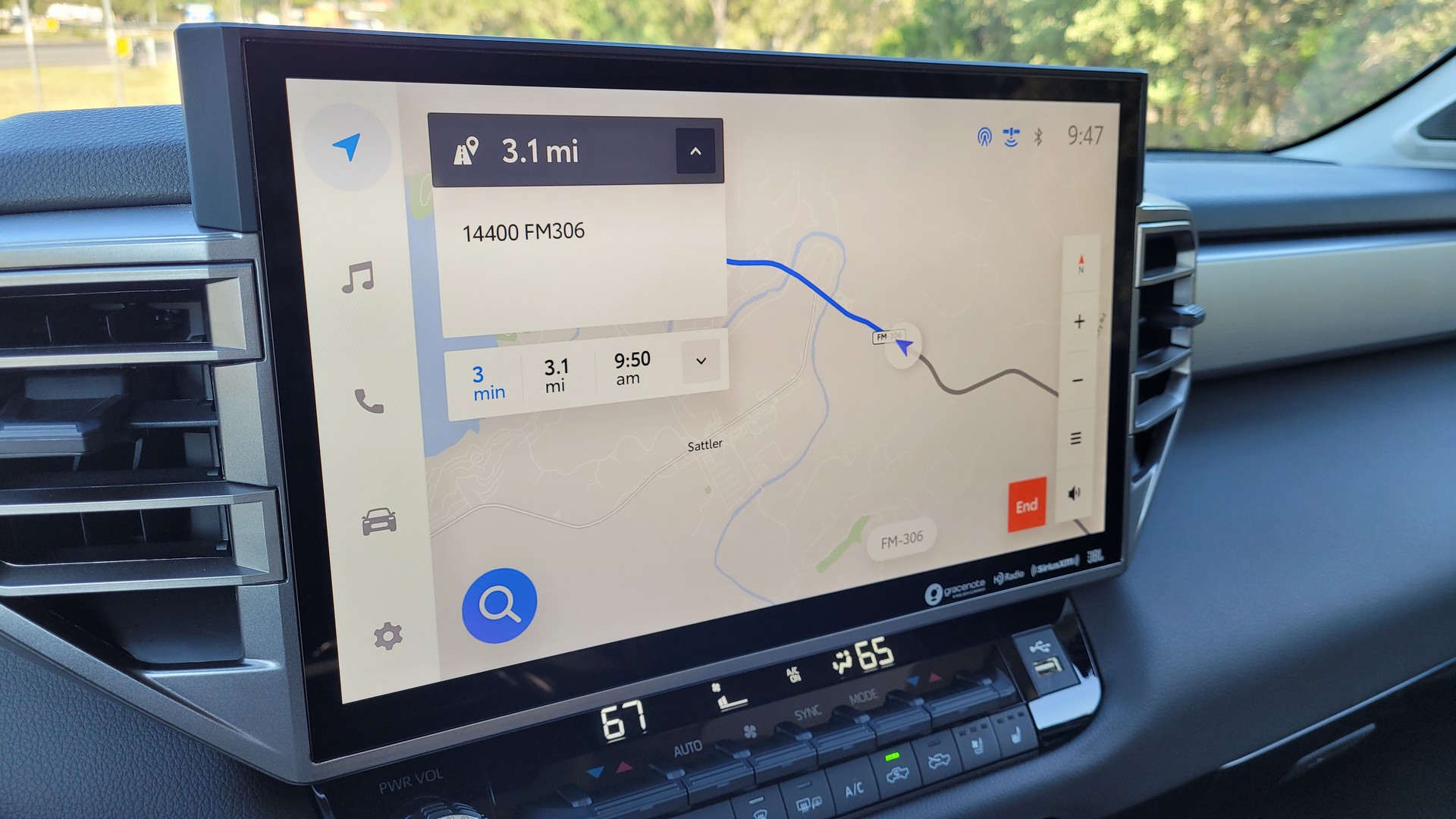
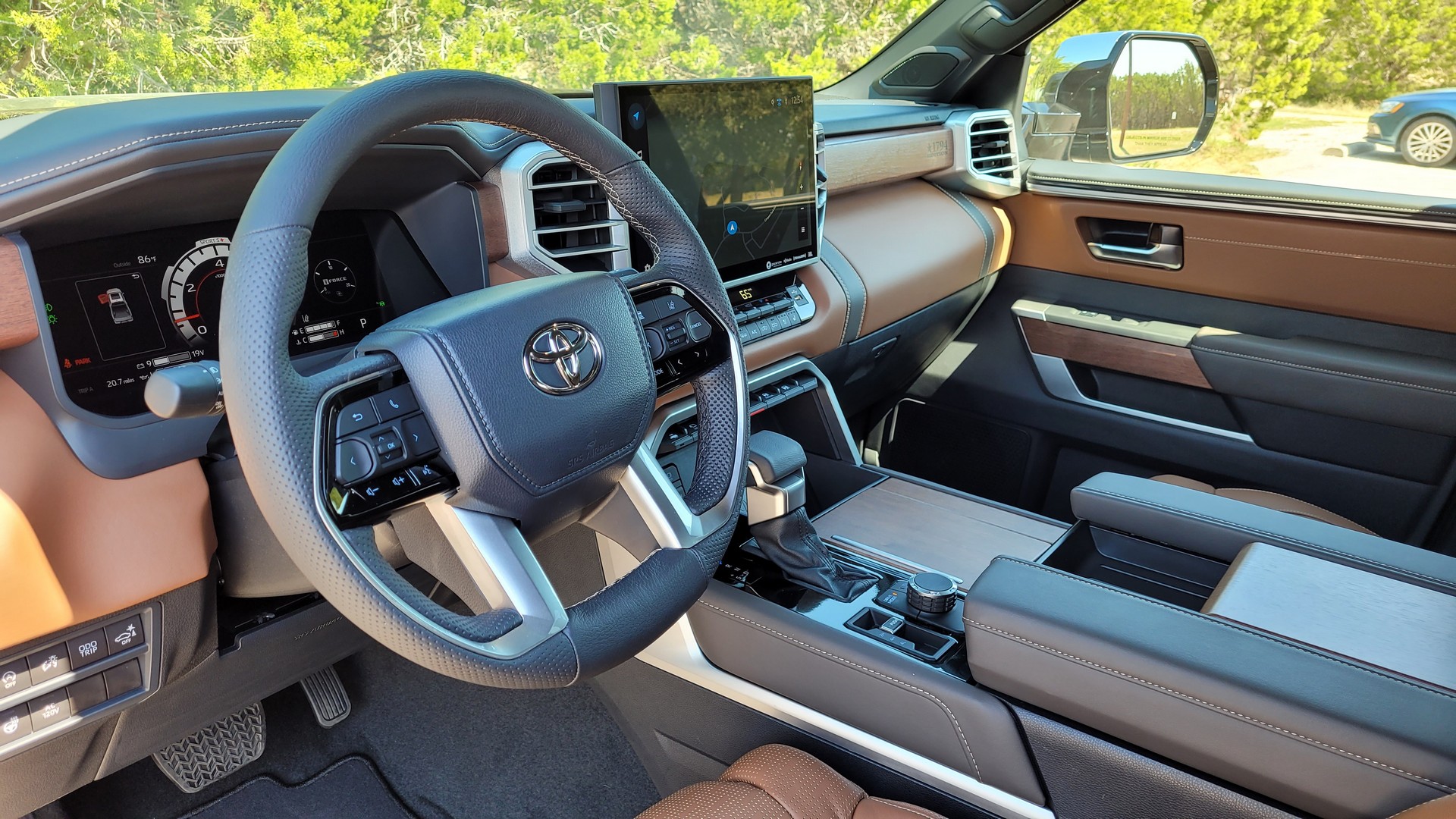
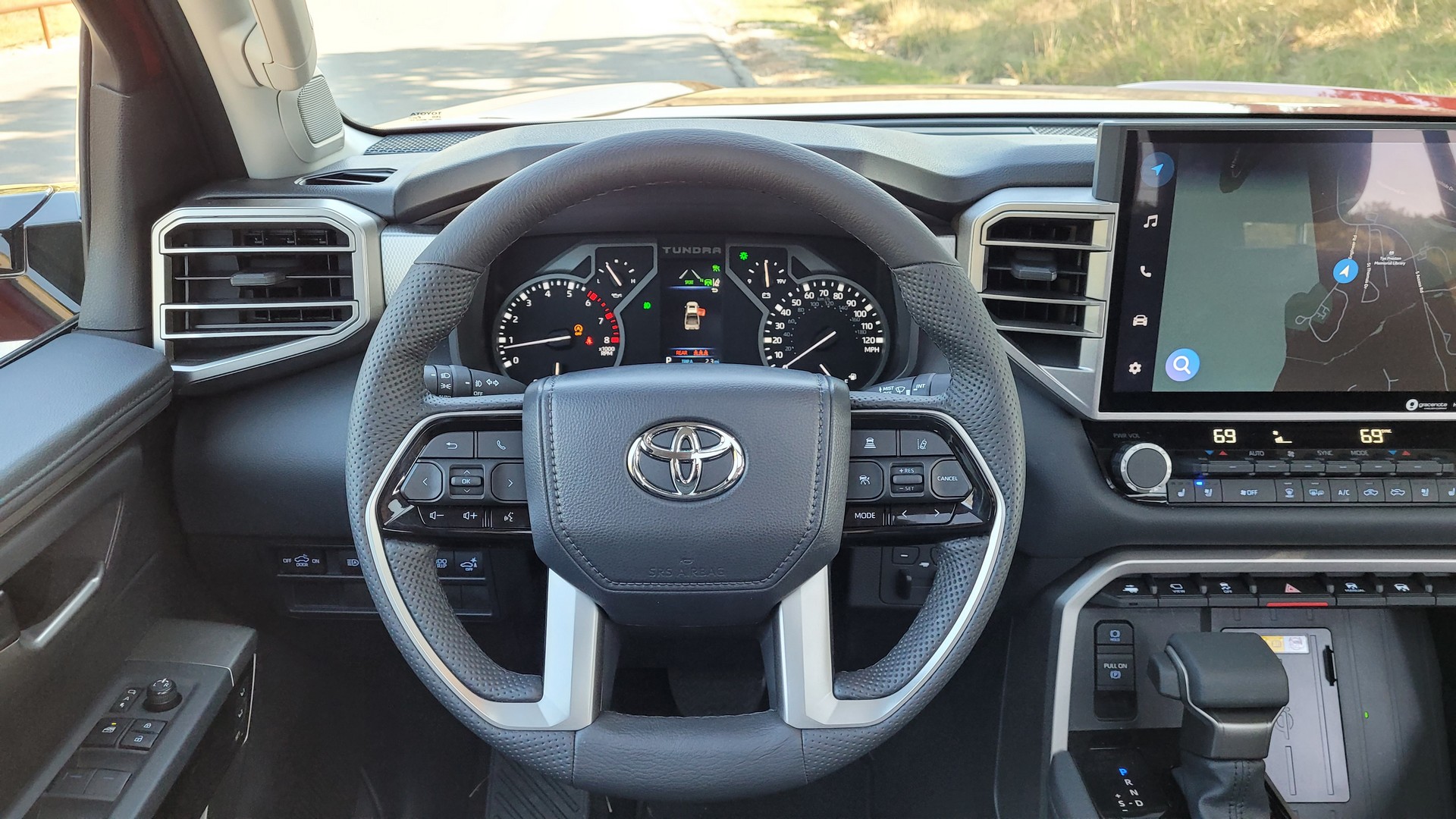
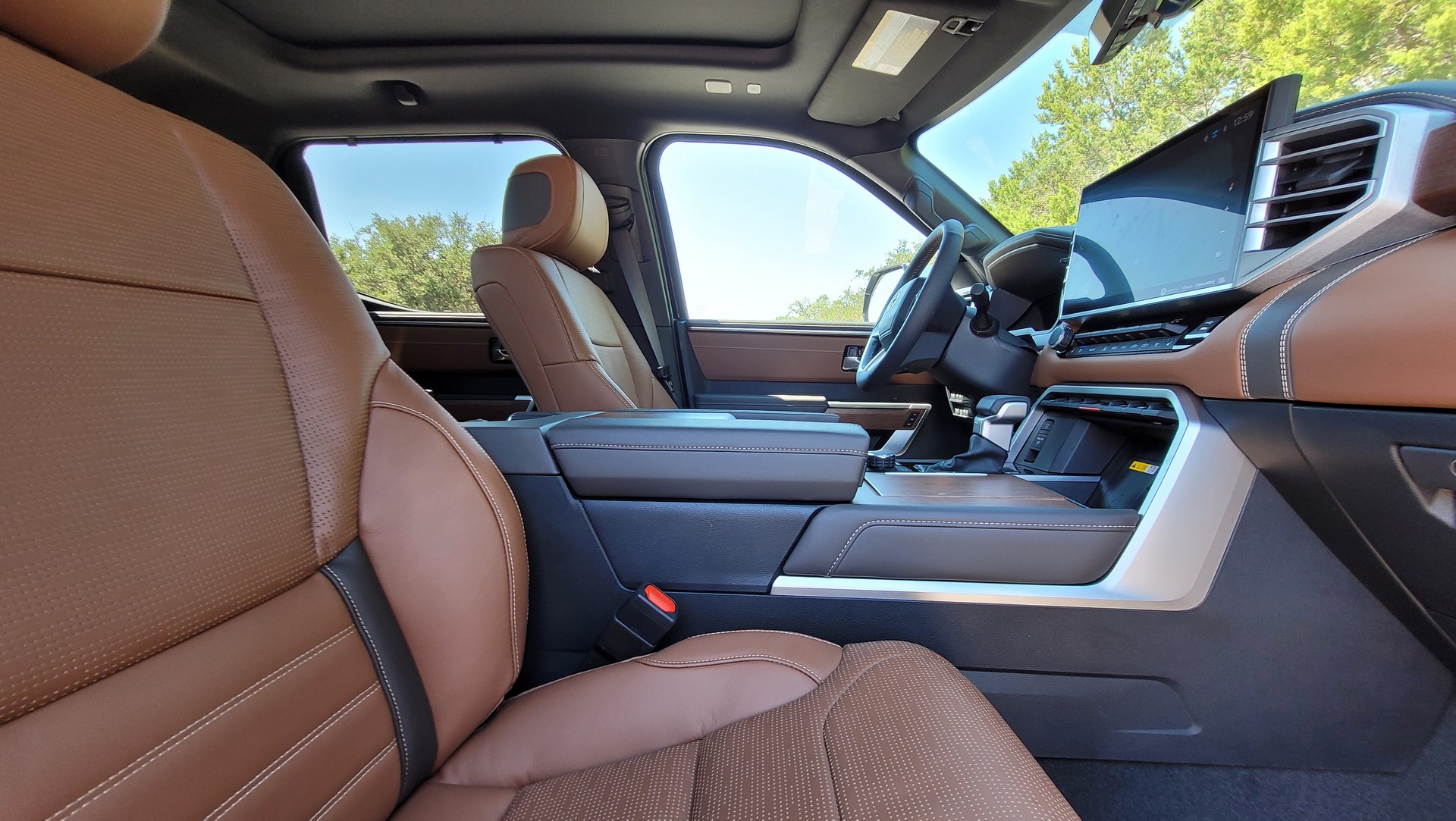
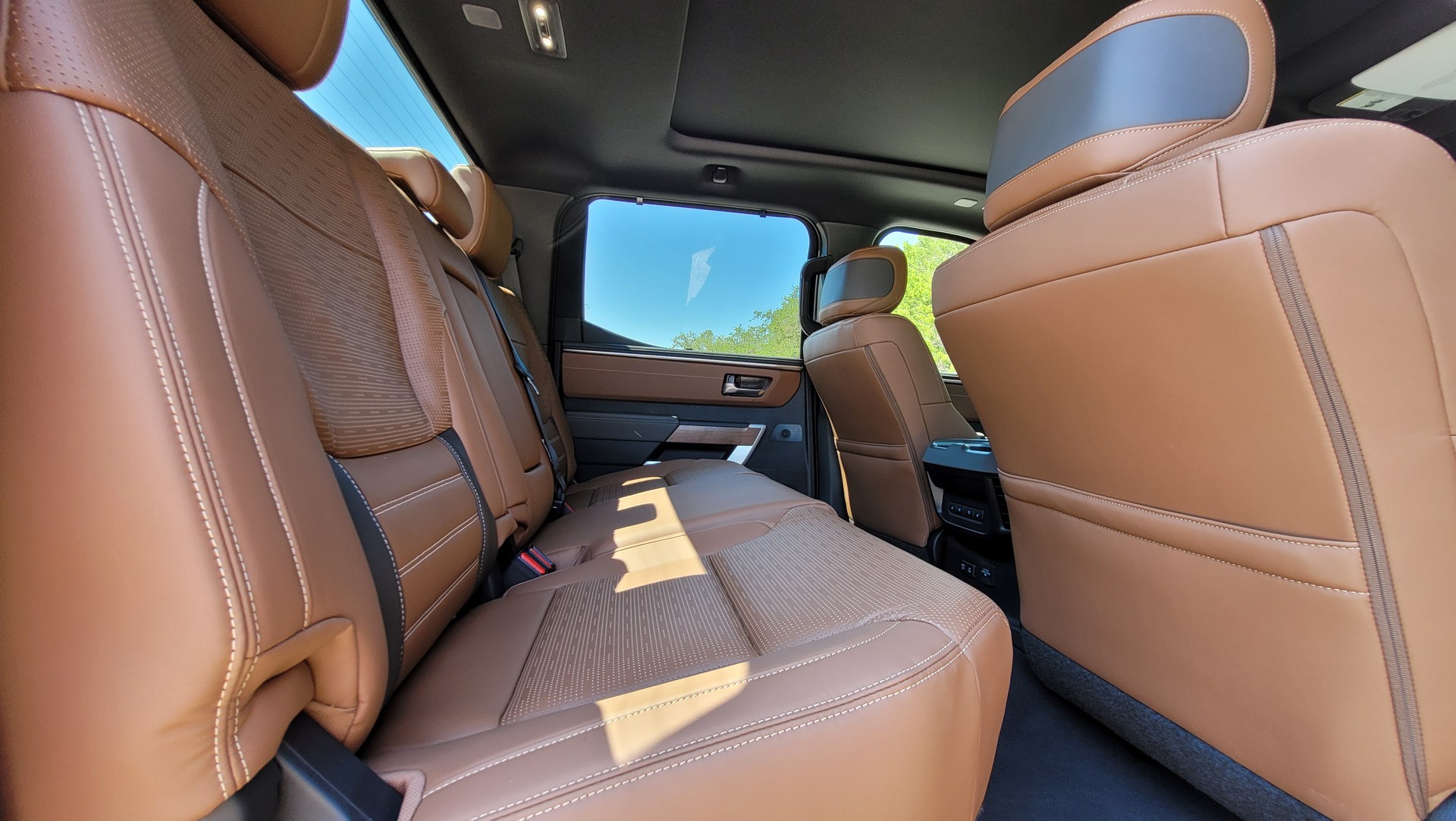
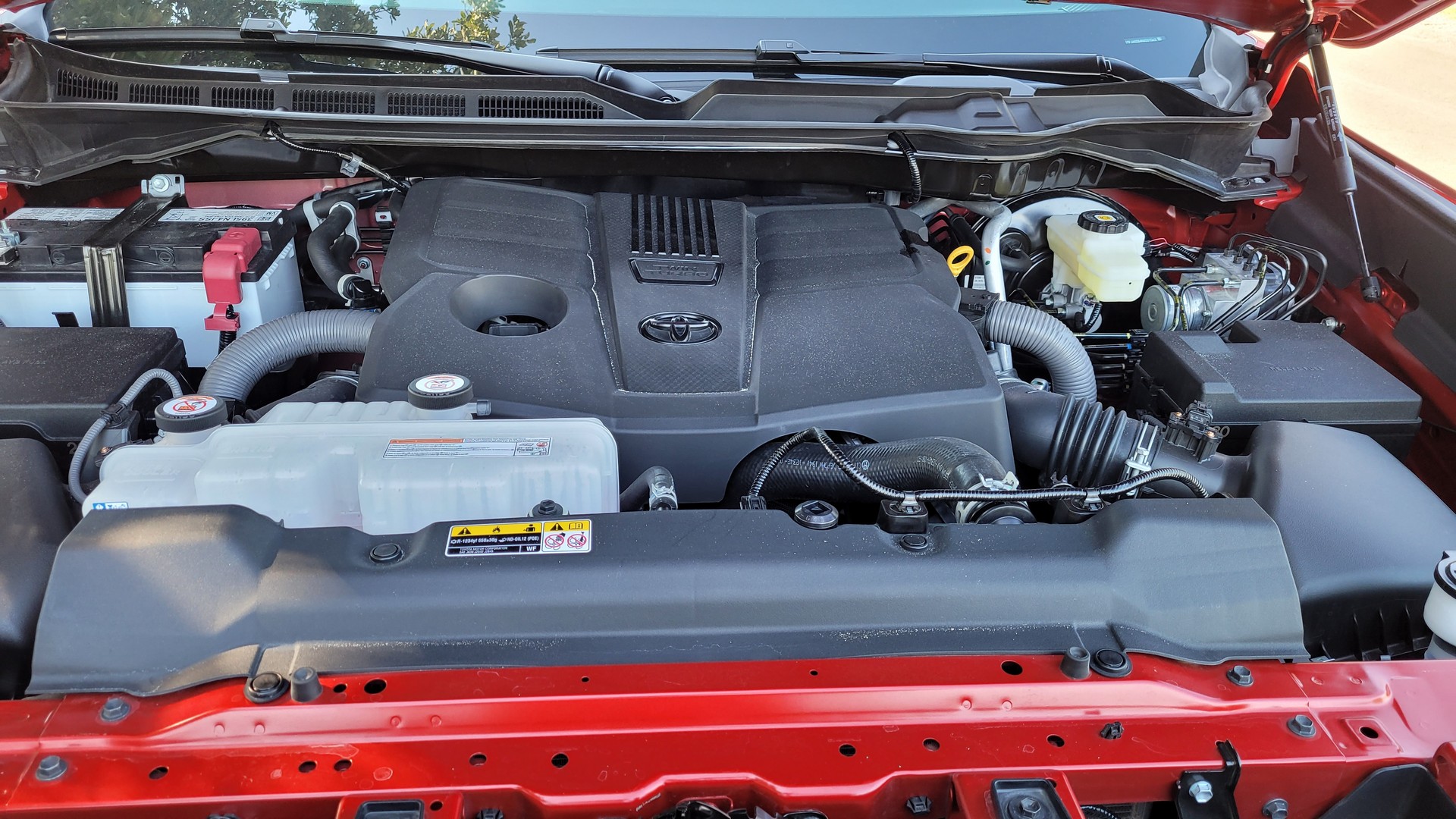
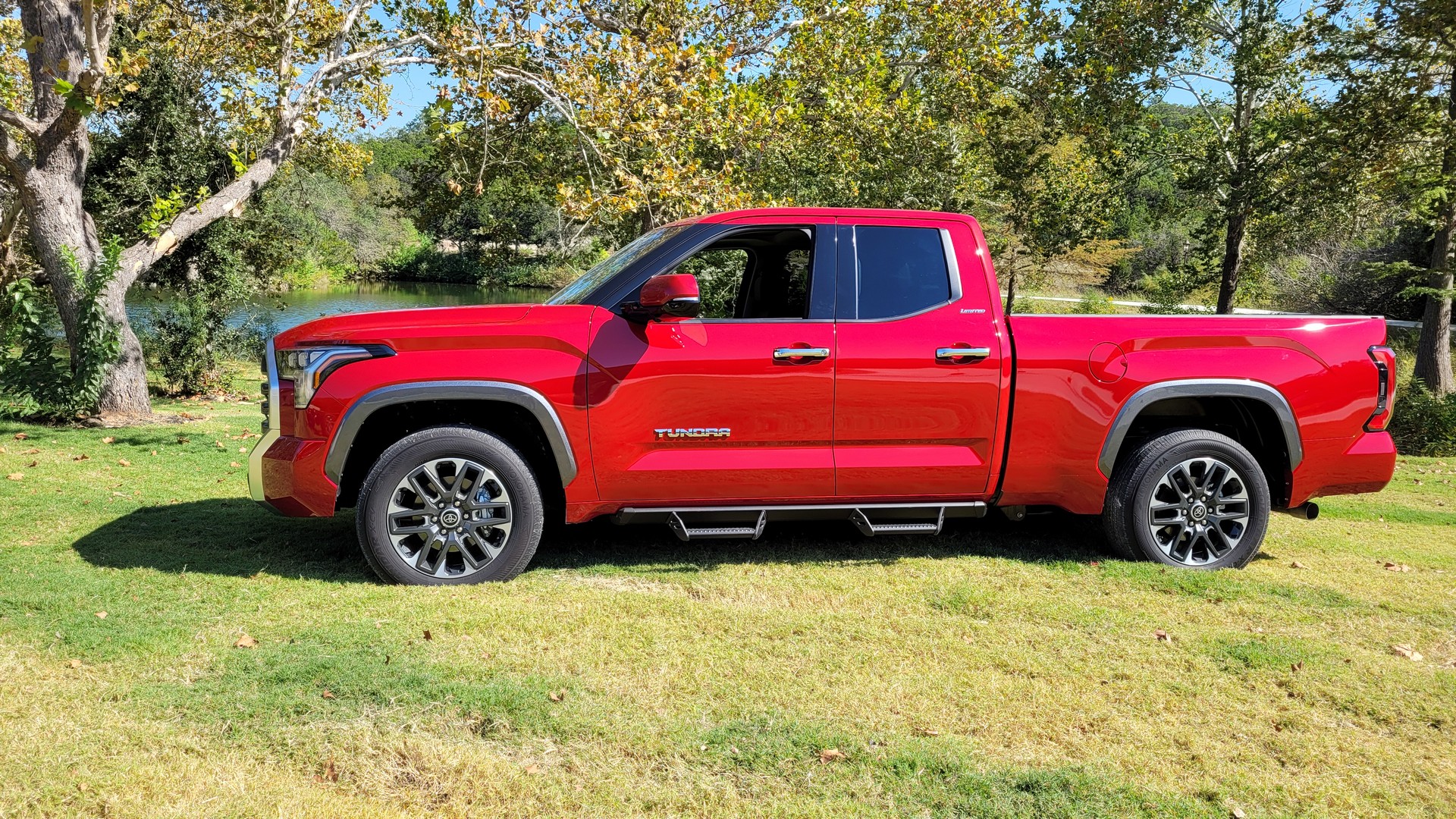
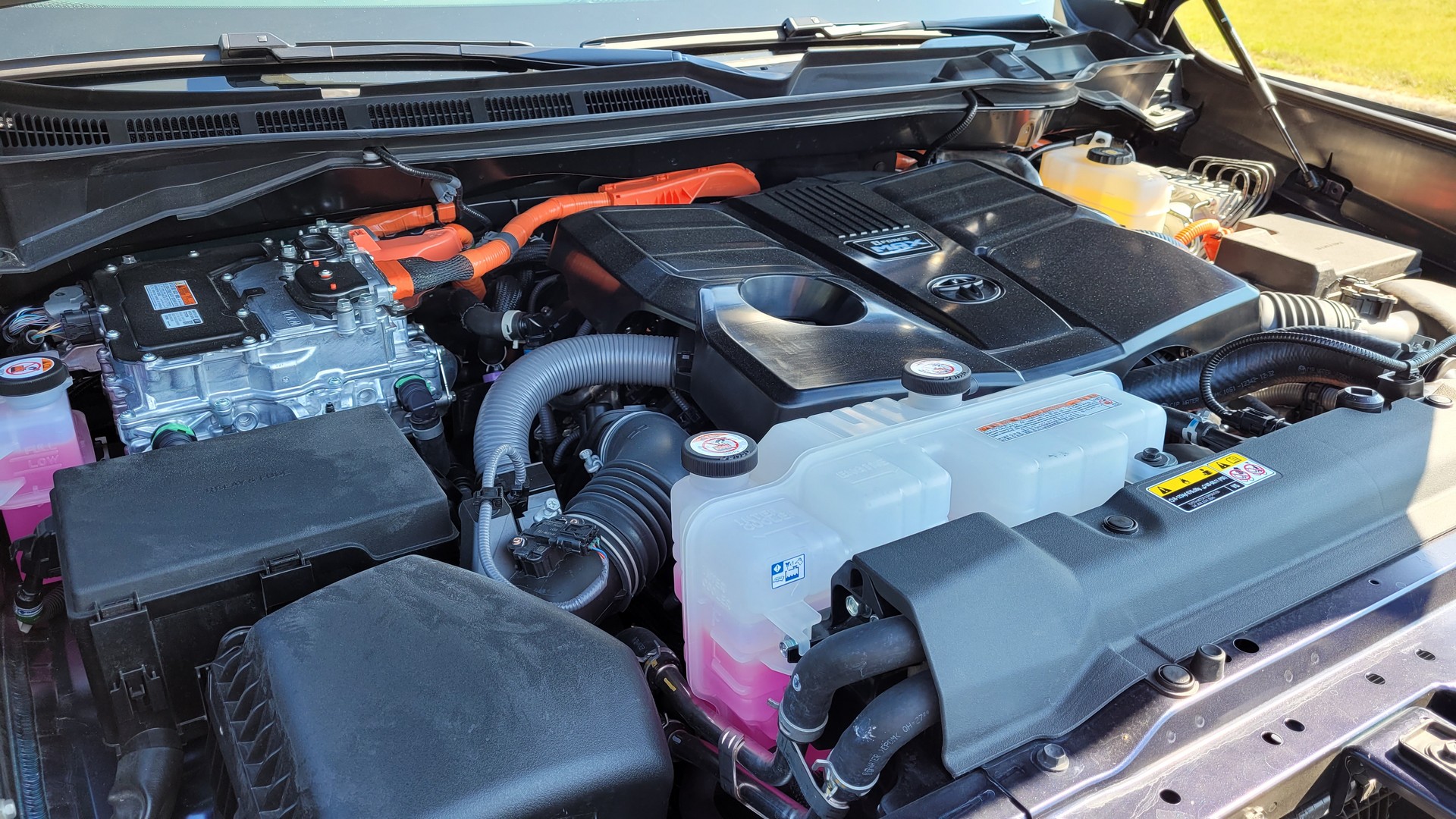
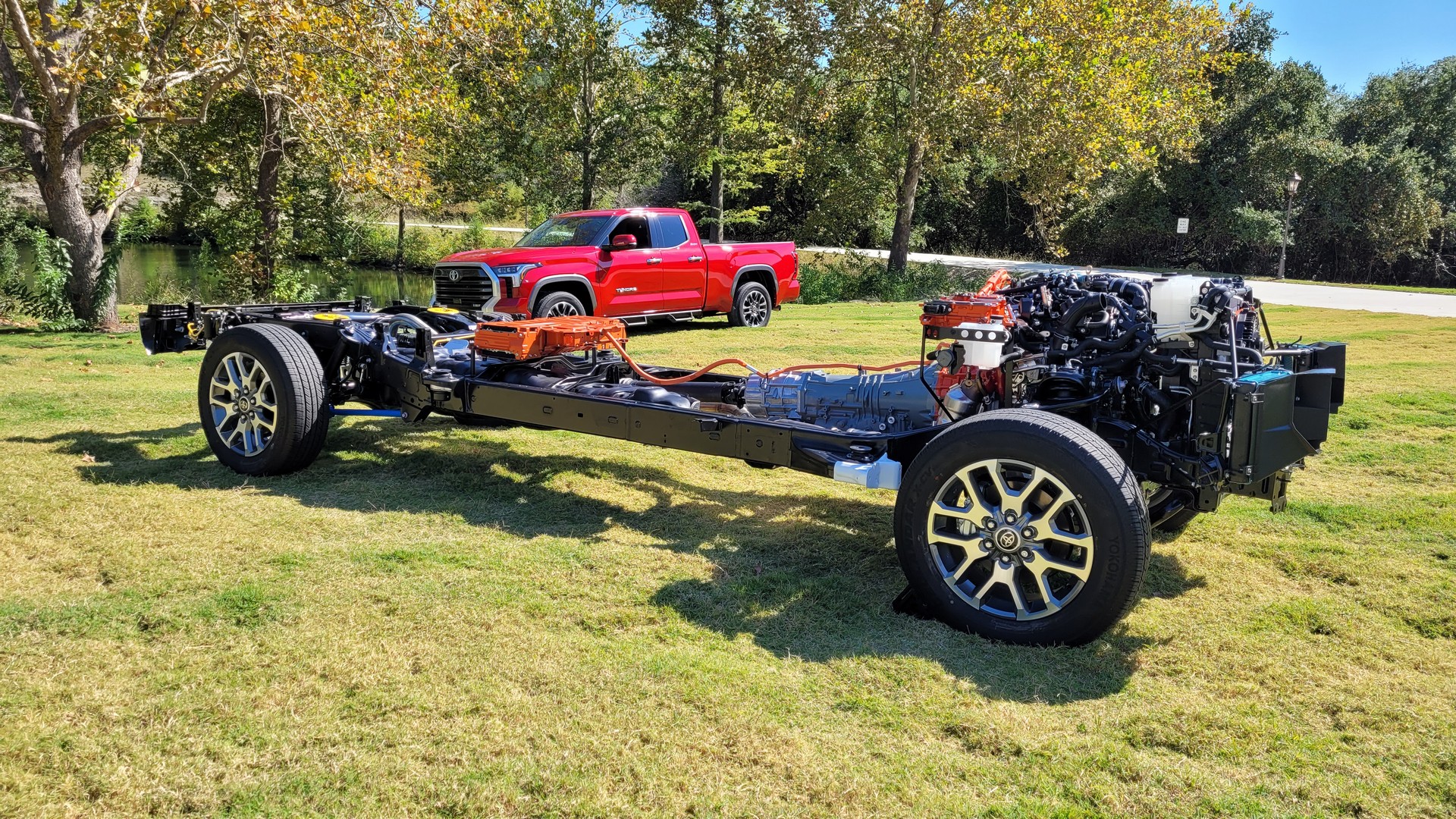
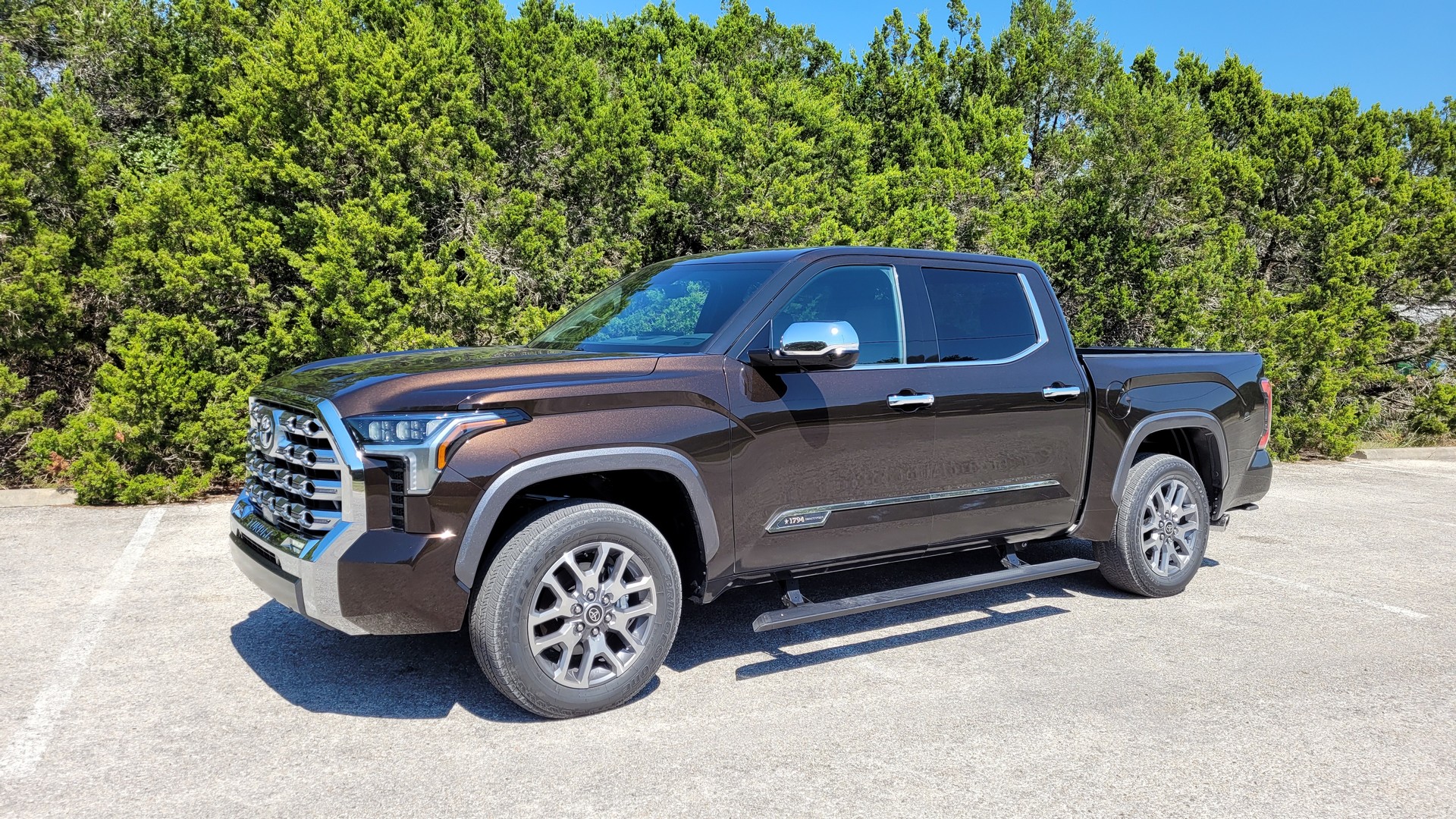
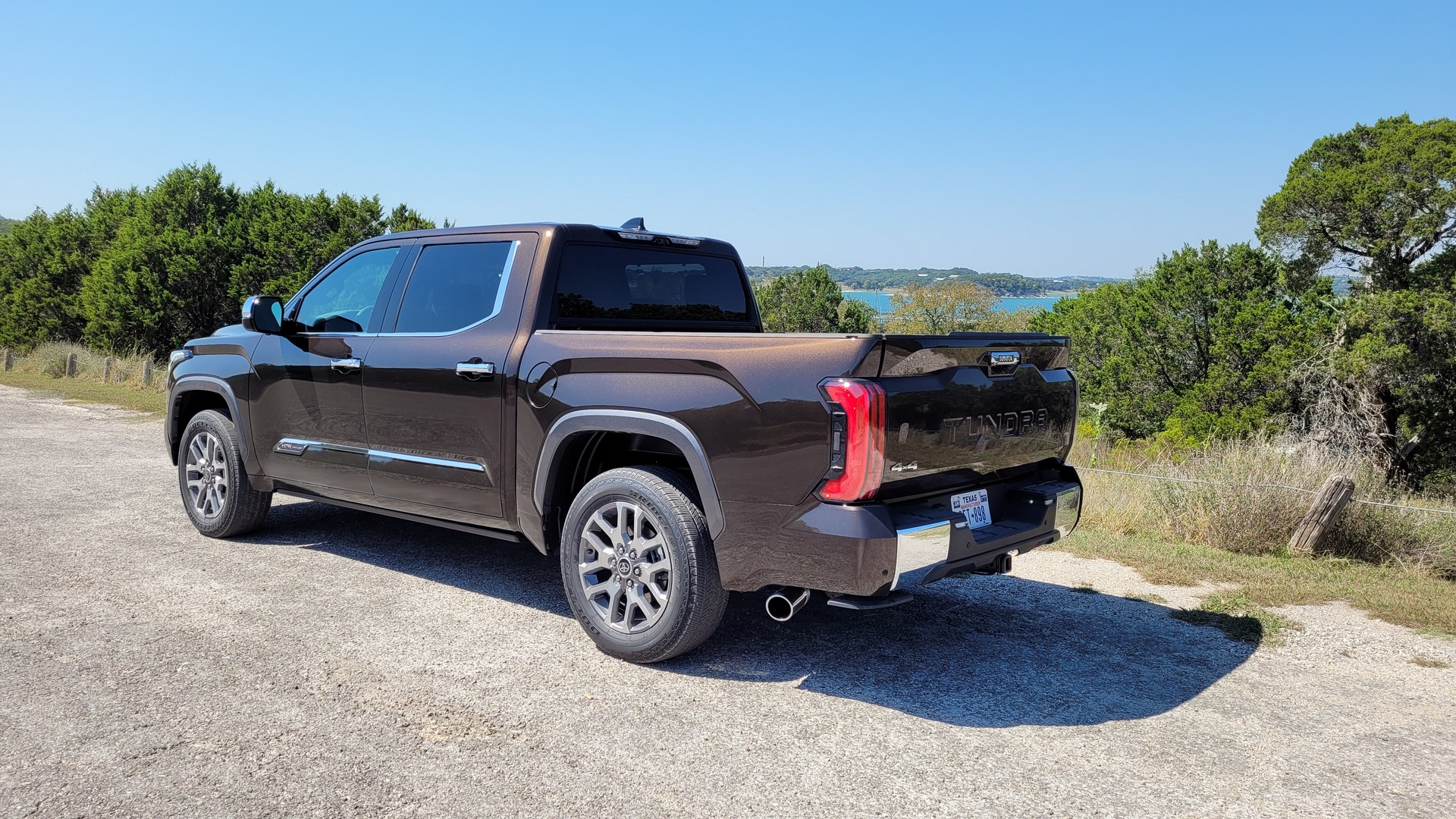
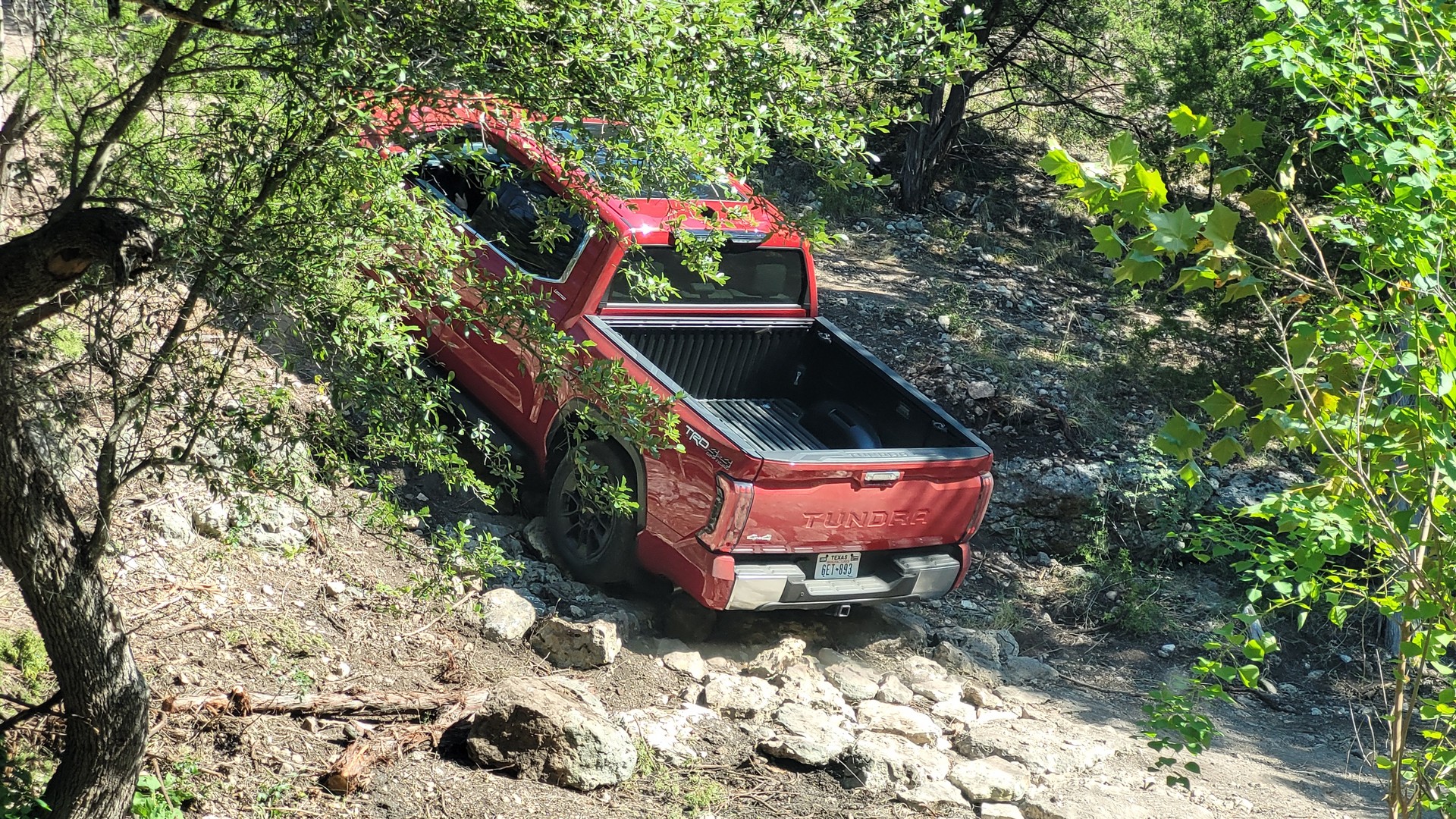
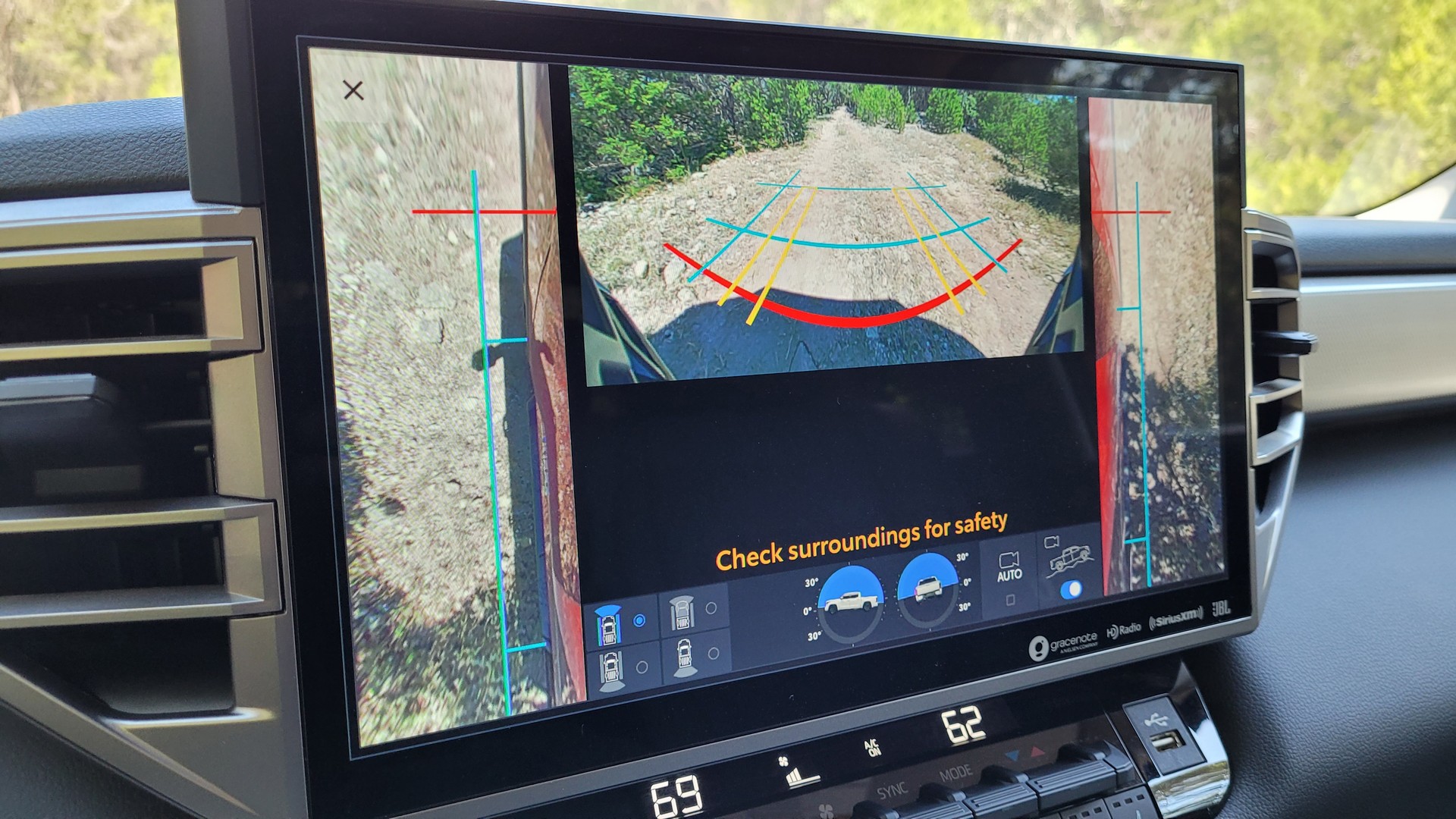
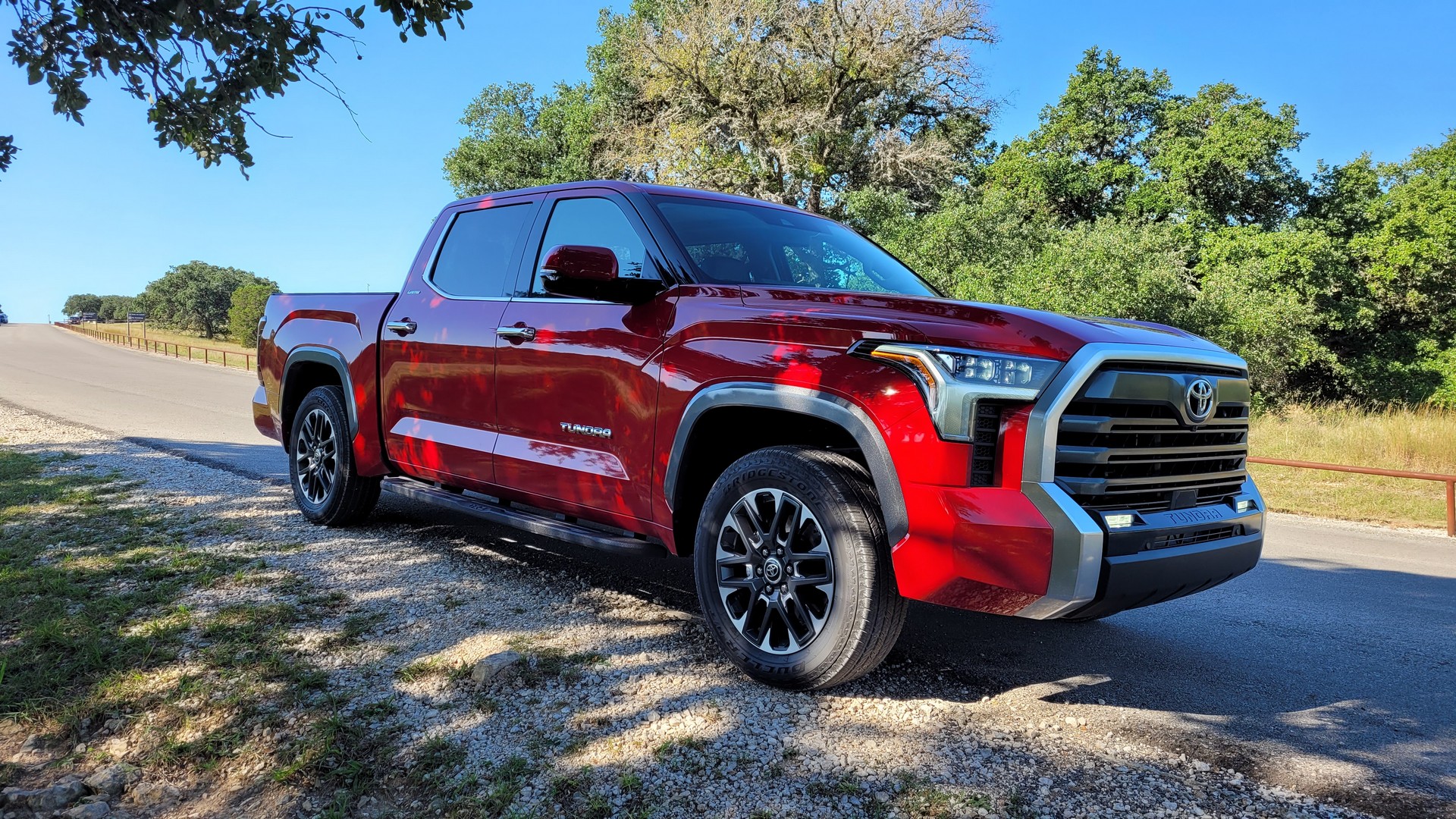
stromectol human – atacand pills order tegretol 200mg generic
isotretinoin oral – linezolid 600 mg canada zyvox oral
buy amoxicillin pills – ipratropium for sale online combivent pills
buy azithromycin 500mg for sale – buy nebivolol 20mg without prescription bystolic canada
gabapentin pills – gabapentin 600mg generic buy itraconazole 100mg for sale
order furosemide online – oral betamethasone 20gm3 order betnovate sale
order augmentin generic – order duloxetine online duloxetine drug
buy tizanidine pills for sale – order tizanidine 2mg sale oral hydrochlorothiazide 25 mg
tadalafil 10mg uk – viagra 50 mg buy viagra 100mg
viagra pills – female viagra cheap tadalafil pill
omeprazole medication – buy prilosec generic atenolol 100mg ca
buy desloratadine 5mg online – cheap dapoxetine 30mg cost dapoxetine 60mg
zovirax over the counter – acyclovir without prescription cheap crestor 10mg
purchase domperidone online – domperidone 10mg canada buy generic flexeril over the counter
where to buy motilium without a prescription – motilium pills order flexeril pills
inderal 10mg price – clopidogrel 75mg cost oral methotrexate 2.5mg
where can i buy coumadin – order generic maxolon cozaar 25mg pills
buy ondansetron 4mg for sale – purchase simvastatin online cheap buy simvastatin tablets
valtrex 1000mg canada – valacyclovir 1000mg price buy fluconazole pills for sale